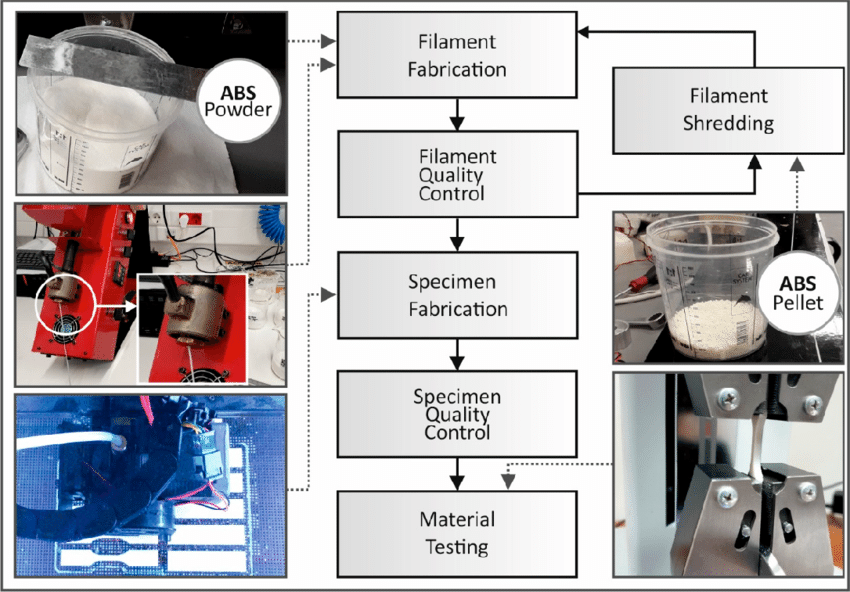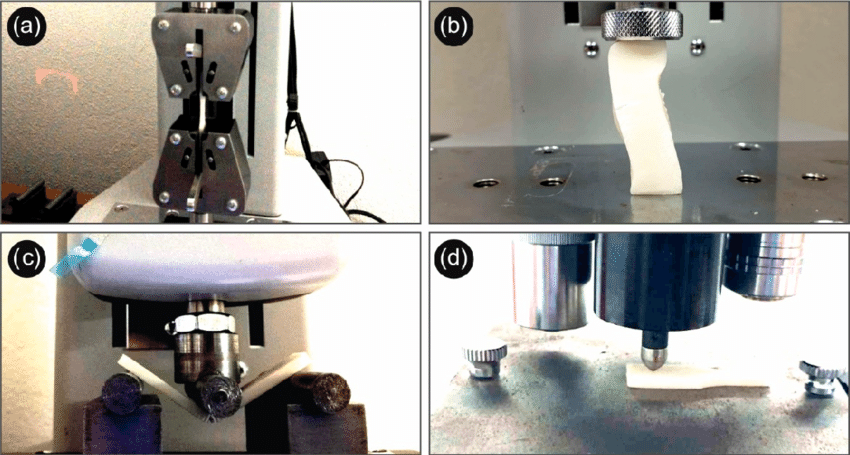New research from Hellenic Mediterranean University investigates the change in ABS filament’s mechanical properties in response to recycling. The scientists set up an experimental simulation of the recycling process, focusing on the thermomechanical treatments and conducting a number of mechanical tests on FFF printed parts. Resultantly, they were able to quantify the effects of repeat recycling at each stage of the process.

Non-biodegradable filaments
Material science is a major part of 3D printing, as the feedstock used is often just as important as the machine when producing high-performance parts. With the most popular 3D printers – FFF systems – the thermoplastic filaments used can have a very damaging effect on the environment and are, more often than not, non-biodegradable. ABS, the second most popular filament after PLA, is one such material. So, the next best alternative is to recycle, reuse, and repurpose ABS parts, keeping them out of landfill for as long as possible.
According to the researchers, several studies focusing on the recyclability of 3D printing polymers have already been conducted. One of the methods tested involved extruding the plastics and injection molding them into new parts before testing their properties. Another cited method involved mixing in natural biodegradable materials into the polymer matrix to effectively reduce the raw amount of polymer being wasted. One common theme, however, is that mechanical properties tend to deteriorate as the number of recycling stages increase. This can lead researchers to seek a delicate ‘sweet spot’ between the number of reuse cycles and the maintenance of desirable mechanical properties.
Recycled acrylonitrile-butadiene-styrene
With the sweet spot in mind, the researchers went out and purchased a vat of fine powder ABS. The powder was drawn into a 1.75mm diameter virgin filament and a Flashforge Inventor was used to 3D print a set of test samples. Tensile, compression, flexion, impact toughness, and micro-hardness tests were performed on the initial samples and the results were recorded. Any leftover filament was recycled using a polymer shredder and re-extruded, with mechanical properties being monitored at every stage. The ABS samples were subjected to six cycles of reuse in total.

Interestingly, the researchers found the mechanical properties to improve by around 30% until the fifth stage of recycling. The first few polymer thermal cycling courses realign the amorphous polymer chain links in the matrix, increasing the molecular interactions present. This improves the stability and overall mechanical properties of the ABS. After cycle five, chemical degradation begins to take hold and the polymer chains begin breaking down. The ABS chains are no longer as mobile and the glass transition temperature of the polymer increases. The results provide evidence for a “significant positive impact” of the ABS recycling process, besides just the environmental benefits.

Further details can be found in the paper titled ‘Sustainable Additive Manufacturing: Mechanical Response of Acrylonitrile-Butadiene-Styrene over Multiple Recycling Processes’. It is co-authored by Nectarios Vidakis, Markos Petousis, Athena Maniadi, Emmanuel Koudoumas, Achilles Vairis, and John Kechagias.
The study of FFF filaments is among the most common in 3D printing feedstock research. Last month, the U.S. Army unveiled a new high-strength multi-polymer filament it had been working on, consisting of an ABS shell and a polycarbonate core. The filament is expected to aid in the field of battle, producing mission critical parts in a timely manner at a fraction of the cost of traditional parts. Elsewhere, in Beijing, researchers have developed a starch-infused polycaprolactone (PCL)-based composite filament with antibacterial properties.
The nominations for the 2020 3D Printing Industry Awards are now open. Who do you think should make the shortlists for this year’s show? Have your say now.
Subscribe to the 3D Printing Industry newsletter for the latest news in additive manufacturing. You can also stay connected by following us on Twitter and liking us on Facebook.
Looking for a career in additive manufacturing? Visit 3D Printing Jobs for a selection of roles in the industry.
Featured image shows SEM images of the tensile fractures. Image via HMU.



